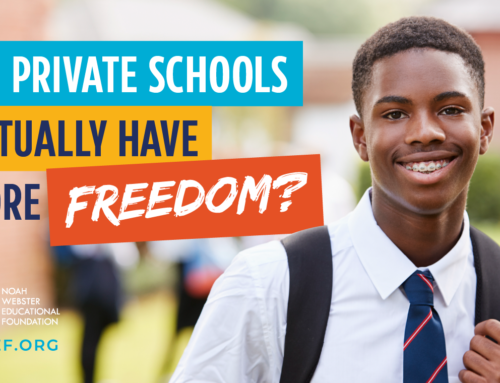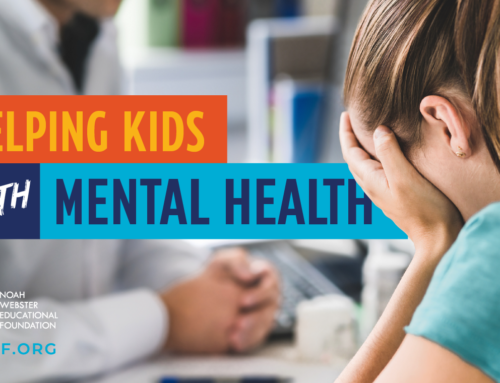
Have you ever wondered how many of your hard-earned tax dollars go into the public school system?
Or maybe you’re curious about how schools create their budgets. Perhaps you’ve heard some horror stories about schools wasting money and have even felt a bit hopeless.
Does anyone care about keeping schools financially accountable?
Today, we will answer those questions, explore school funding basics, and take a look at how their budgets are created.
Joining the conversation this week is Willie Deutsch of Virginia, who kindly gave NWEF an interview. Deutsch was a four-year school board member (who earned the title of “Budget Hawk”) in Prince William County, Virginia. He worked tirelessly to push money into the classroom and save money through more efficient spending.
Where the Money Comes From
According to Public School Review, “Approximately 48 percent of a school’s budget comes from state resources, including income taxes, sales tax, and fees.
Another 44 percent is contributed locally, primarily through the property taxes of homeowners in the area. The last eight percent of the public education budget comes from federal sources, with an emphasis on grants for specific programs and services for students that need them.”

How much money do schools get compared to other state and local expenditures? All in all, state and local governments combined spend an average of 21% of total tax revenue on elementary and secondary education, the Urban Institute writes.
Who Controls the Funds?
In Deutsch’s interview, he shares how school funding works in his home state of Virginia. (This process varies by state, depending on language provided in state constitutions and statutes.)
In Virginia—after local taxes, state resources, and federal grants have been funneled into the school district—it is the responsibility of certain teams and individuals to see that those funds are dispersed and budgeted wisely.
The superintendent’s staff, led by the district’s finance or budget team, will draft the budget. This is produced after consultation with schools and department heads about needs and is based on expected revenues. This budget is submitted to the school board for their review, through a markup, amendment, and public hearing process. At the end of that process, the school board adopts a budget.
There are, however, school districts that employ site-based budgeting. This form of budgeting takes place when the “central office decentralizes this control and school principals hold the autonomy to decide how funds are allocated based on enrollment numbers and needs of their individual school,” says Allovue.com.
Where the Money Goes
If you run a household or business, you know that budgeting is not an easy task. As you can imagine, it takes on a whole new level of complexity for schools.
Allovue and Your Agora break down the key areas of budgeting for public schools:
- Staff salary and benefits of
- Teachers
- Administration and office staff
- Maintenance and custodial staff
- Other full-time staff and part-time supports
- Curriculum
- Supplies and materials
- Including machinery and equipment
- Running and repairing the facilities
Roughly 78% of the budget is dedicated to staff salaries and benefits. Materials and supplies are allocated about 6%, and property services ring up at 5%. You can click here to view a graph of these expenditures and other allocations.
The Budget Hawk
Deutsch is dedicated to serving the Prince William County School district. He did that as a school board member from the years 2015-2019. He cares about keeping school systems financially accountable.
That’s a big task in Prince William County because, as Deutsch points out, it is “the second largest school division in Virginia. It makes the top 100 list in the country. It has about 90,000 students, about 1,100 employees and 100 schools…[and has] over a billion dollar budget.” Whew!
Deutsch ran for the school board after he noticed “a lot of issues with wasteful spending and kind of a non-responsive administration that wasn’t listening as much to the parents and the community as a lot of people would desire.”
What did his community want? Well, after the most expensive high school in the state (with a olympic-sized swimming pool on the roof!) was built in his district, the community pushed back, expressing more interest “in money actually going to the classroom to help with education.”
(Does adding more money solve school problems? Here’s why more funding isn’t always the answer.)
Deutsch wanted to advocate for the community and the parents, so he eventually became a “budget hawk” on the school board. A budget hawk is someone who aggressively attacks misspending and brings about financial reforms in the school district.
To hear more of Deutsch’s experience, click here to watch his interview with NWEF President, Melvin Adams. Stay tuned for the release of the rest of this interview next week.
In the meantime, go dig into what your state’s spending habits are: find out what the average cost of education per child is in your state and how your tax dollars are being spent. Explore state, national, and international statistics on public education spending. Get started by checking out this cool article at Educationdata.org.
Don’t miss part 2 of this conversation. Click here to read One Controversial Way You Can Influence Local Education with Willie Deutsch





[…] This is Part 2 of a series of interviews with Willie Duetsch. Click here to read Part 1. […]
[…] is Part 3 of a series of interviews with Willie Duetsch. Click here to read Part 1, and click here to read Part […]